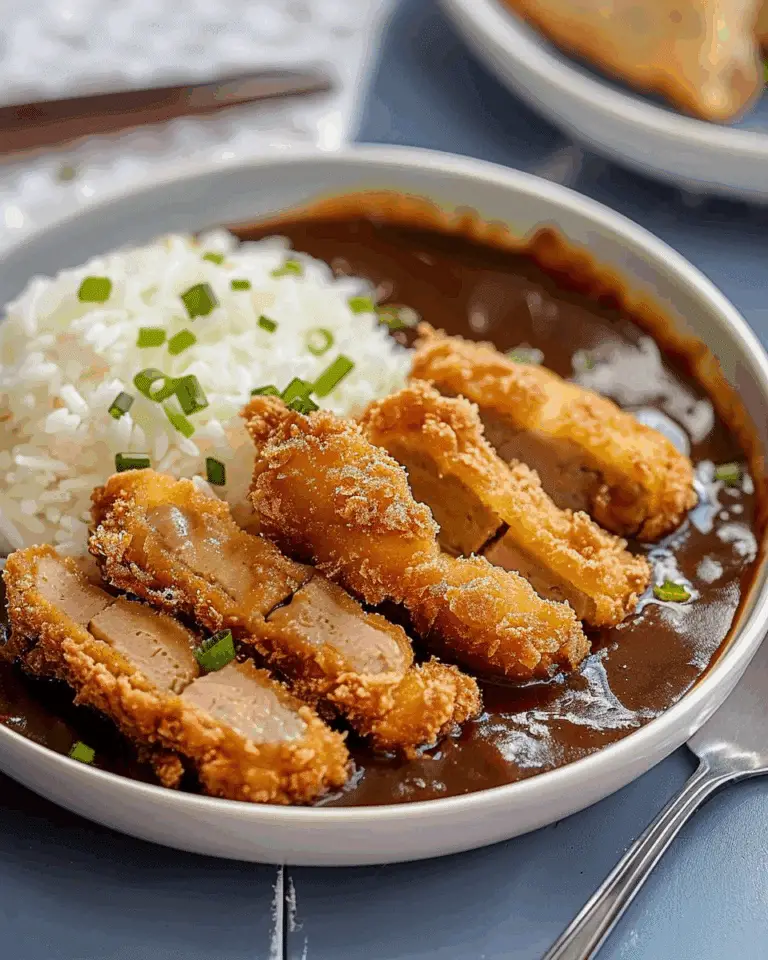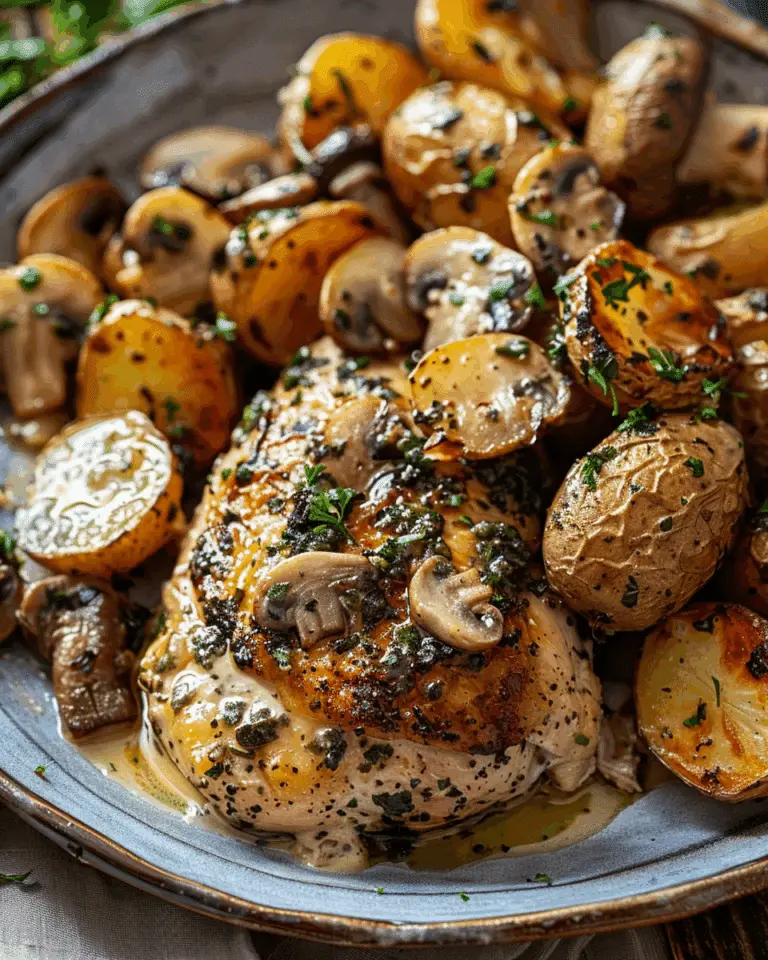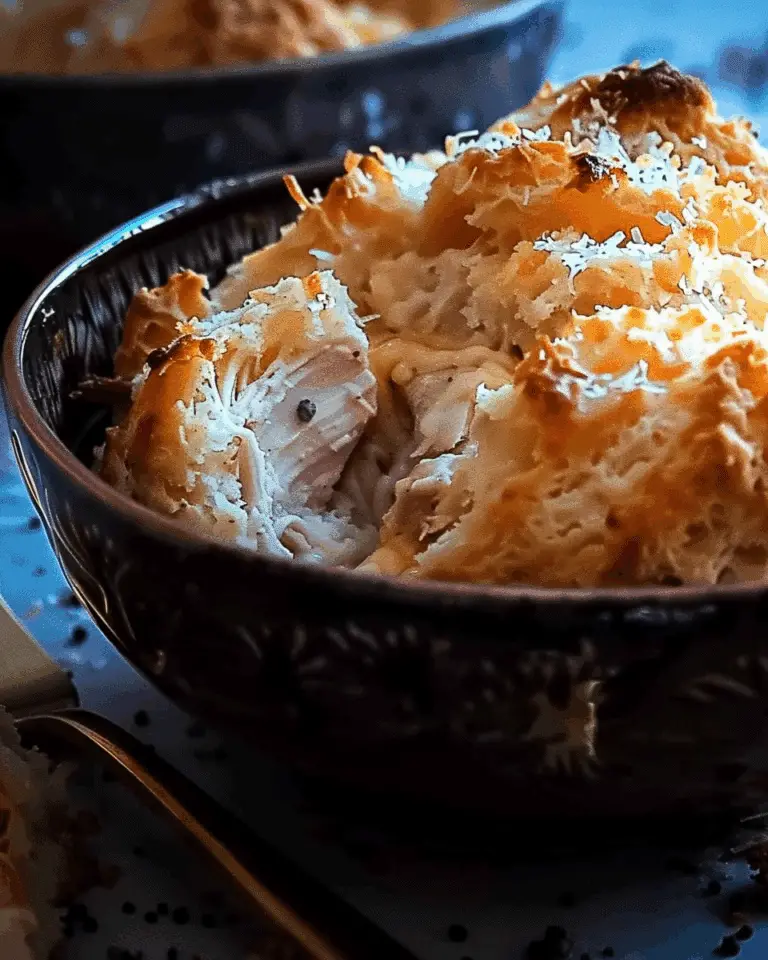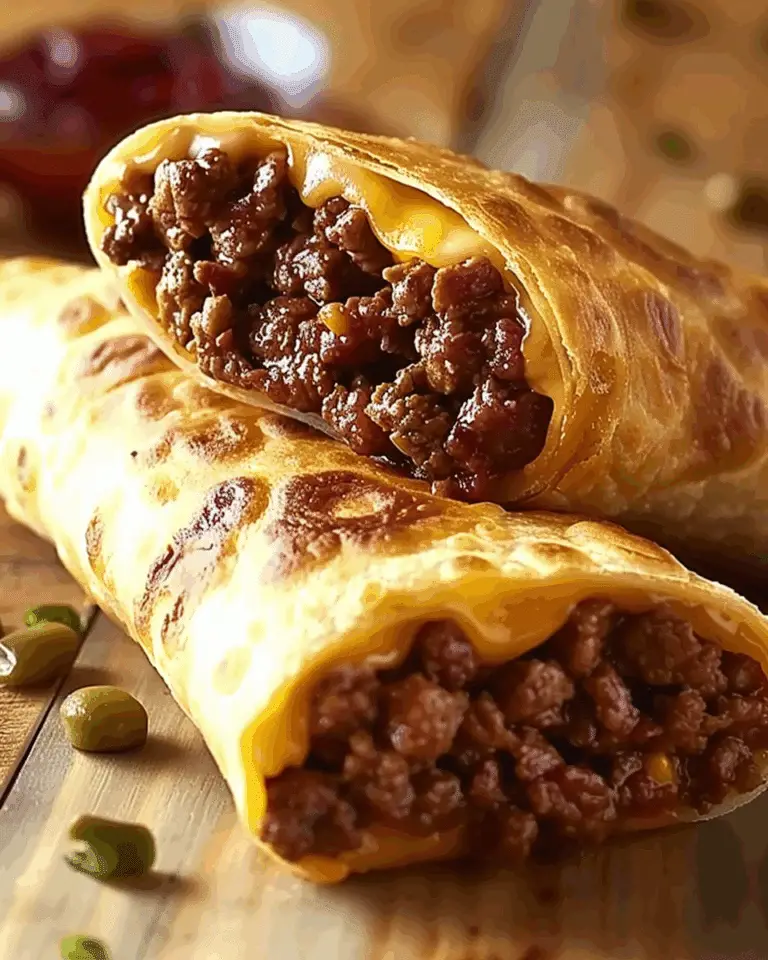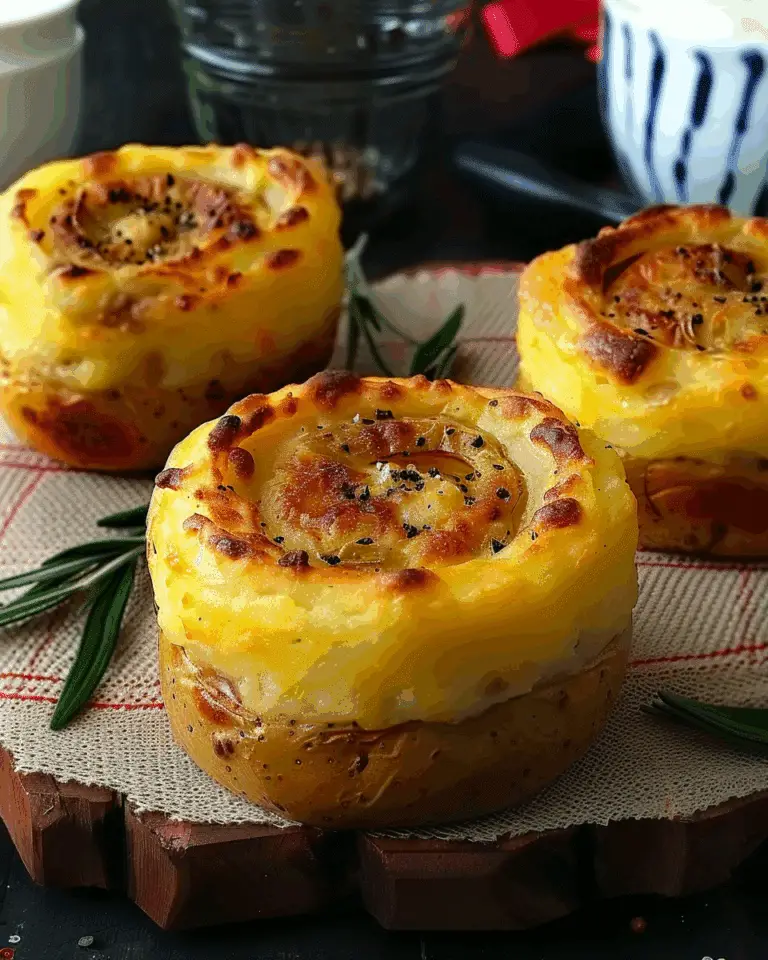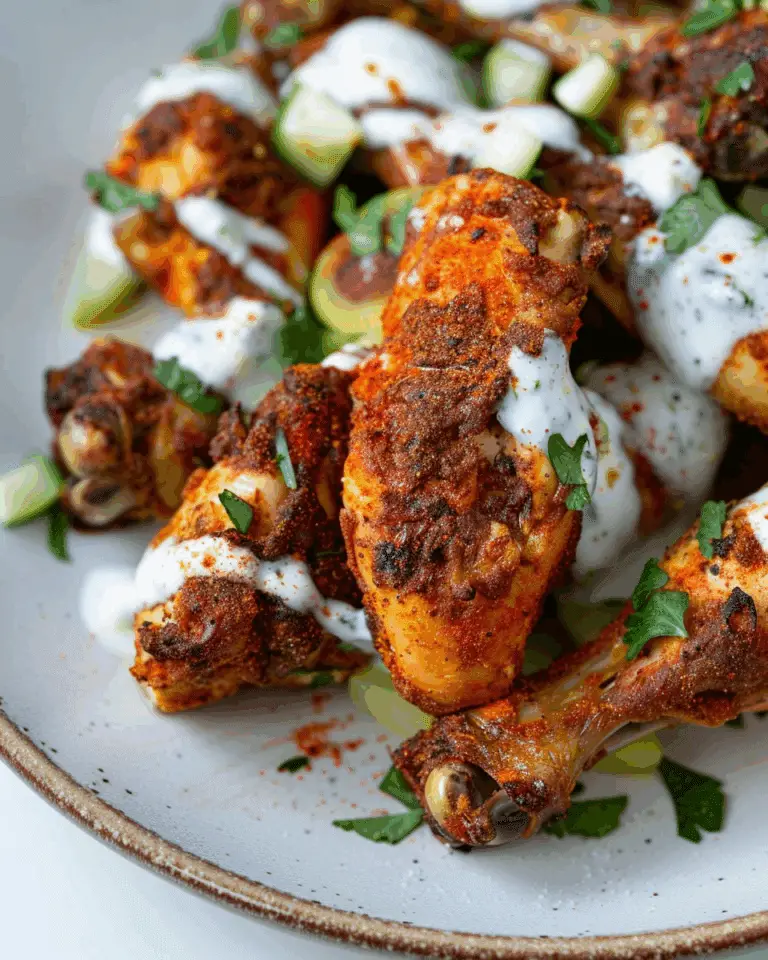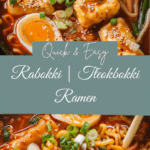Rabokki is a delicious Korean comfort dish that combines chewy rice cakes with springy ramen noodles in a sweet, spicy, and savory broth. It’s loaded with texture and flavor, and it comes together in just 15 minutes, making it one of my favorite quick meals when I want something hearty and satisfying without spending too much time in the kitchen.
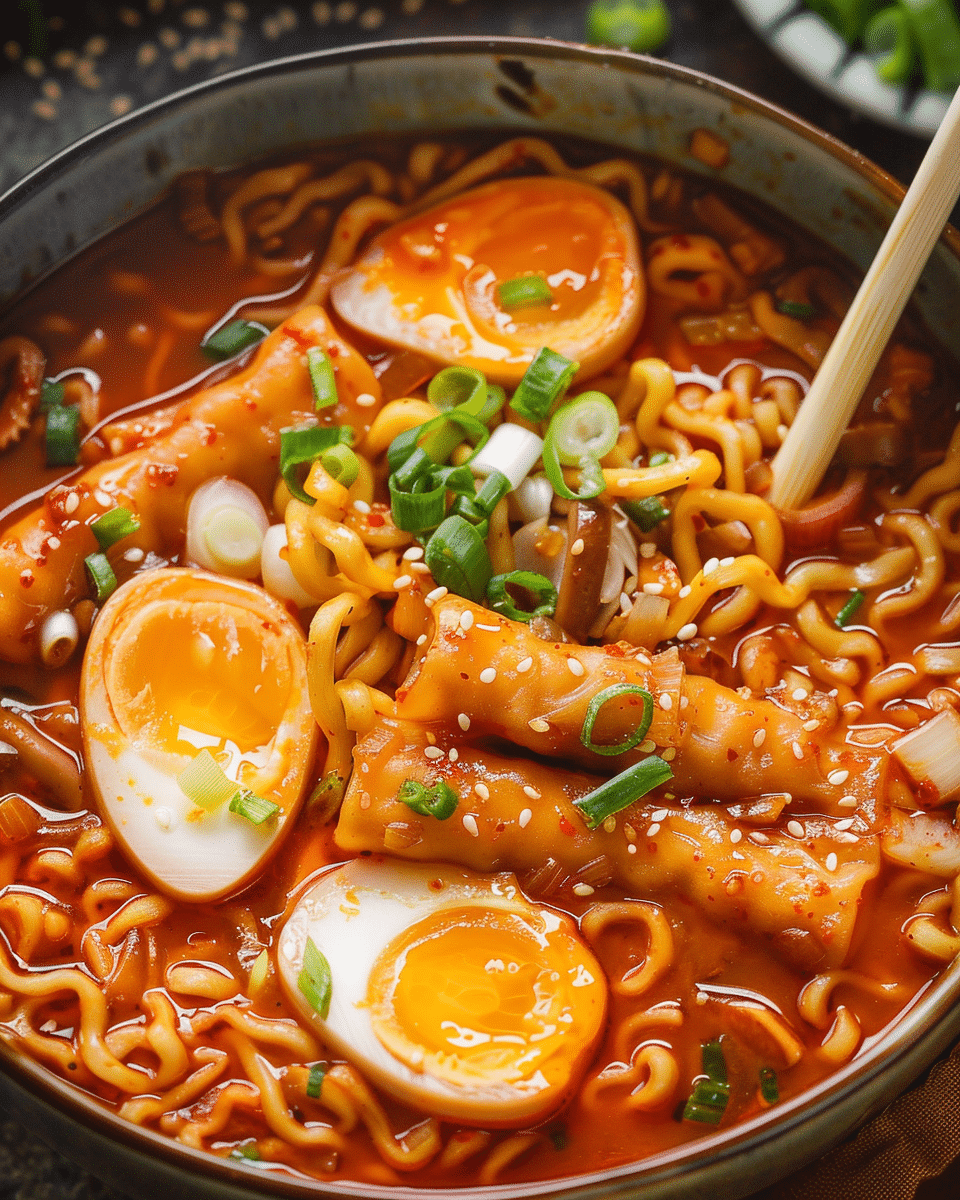
Why You’ll Love This Recipe
I love making rabokki because it’s the ultimate one-pot dish that balances chewy, bouncy, and tender textures in every bite. It’s versatile enough for me to adjust the spice level or swap in different proteins and veggies, and I never get bored of it. I also like that it’s fast to make, which means I can enjoy a restaurant-style Korean dish at home even on the busiest nights.
Ingredients
(Here’s a tip: Check out the full list of ingredients and measurements in the recipe card below.)
For the sauce:
-
3 tablespoons gochujang (Korean chili paste)
-
3 tablespoons low-sodium soy sauce
-
2 teaspoons sugar
-
1 teaspoon gochugaru (Korean chili flakes)
-
2 teaspoons ramen packet seasoning (optional)
For the rabokki:
-
4 cups anchovy or dashi stock
-
1/2 medium onion, finely diced
-
3/4 cup cabbage, shredded
-
14 rice cakes, soaked in warm water for 20 minutes then drained
-
4 frozen dumplings
-
1 pack instant ramen noodles
-
2 boiled eggs, cut in half
-
1/2 tablespoon sesame seeds, toasted white and/or black
-
2 green onions, thinly sliced
Directions
-
In a small bowl, mix together the sauce ingredients and set aside.
-
In a large pot over medium-high heat, add the stock and stir in the sauce until the sugar dissolves. Bring it to a boil.
-
Add onions, cabbage, rice cakes, dumplings, and ramen noodles. Cook for about 7 minutes, or until dumplings are cooked through, rice cakes are chewy, and the noodles are tender. The broth should also have thickened.
-
Finish with boiled eggs, sesame seeds, and green onions. Serve hot and enjoy immediately.
Servings and timing
This rabokki recipe makes 2 servings. It takes about 5 minutes to prepare and 10 minutes to cook, so the total time is 15 minutes.
Variations
I like that rabokki is so easy to customize:
-
Adding Korean fish cakes gives the dish more protein and a deeper flavor.
-
Melting mozzarella or American cheese on top creates a gooey, indulgent twist.
-
Swapping the stock for vegetable broth and using veggie dumplings makes it vegetarian-friendly.
-
Increasing the gochujang or gochugaru turns it into a spicier, fiery version.
storage/reheating
When I have leftovers, I store rabokki in an airtight container in the fridge for up to 2 days. The rice cakes and noodles will soak up a lot of the sauce, so when I reheat it on the stove, I like to add a splash of stock or water to loosen it up. The microwave also works for reheating, but the stovetop gives me a better texture.
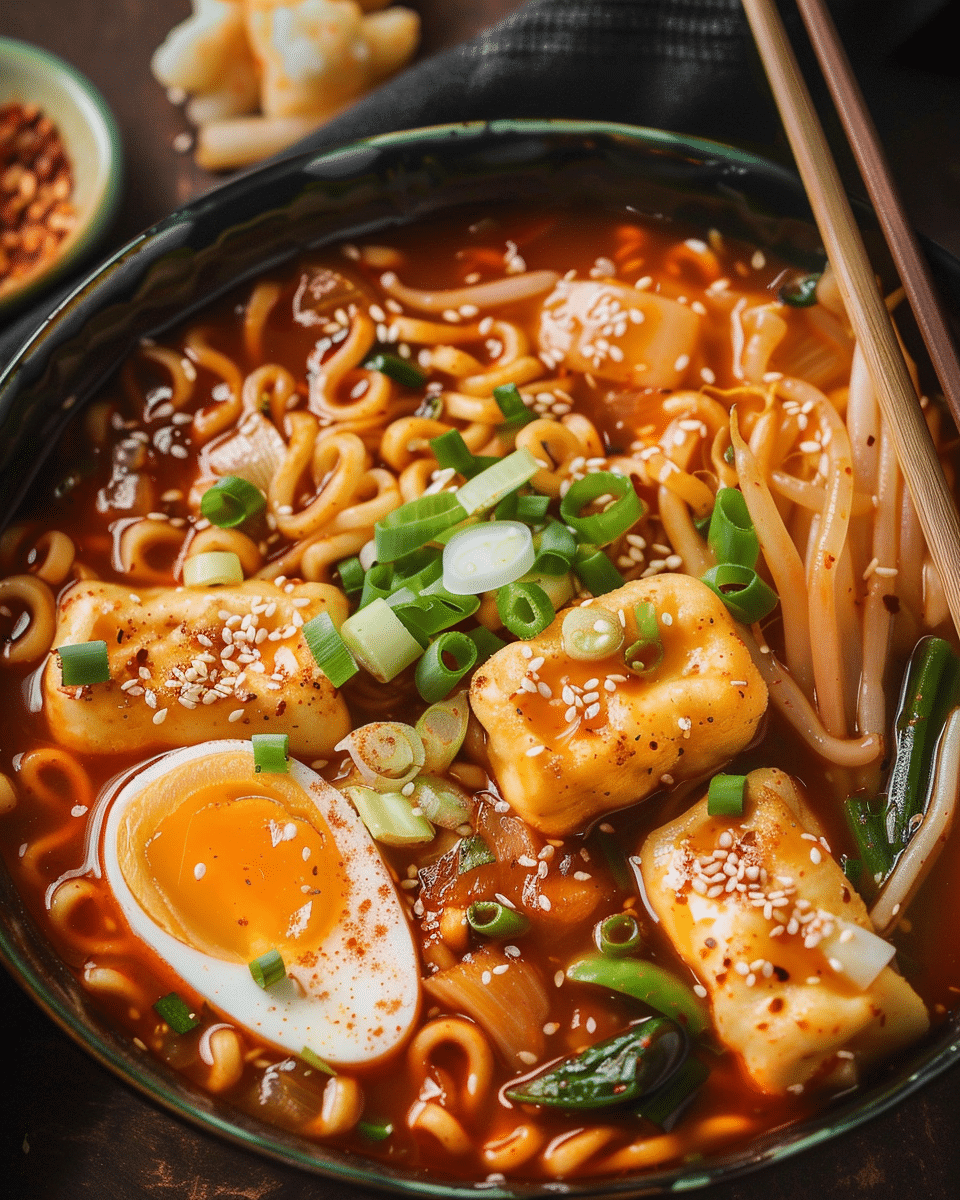
FAQs
How do I keep the noodles from turning mushy?
I check the package instructions for the ramen and add them toward the end of cooking to keep them springy.
Can I make rabokki less spicy?
Yes, I reduce the amount of gochujang and gochugaru, then add a little sugar for balance.
What’s the difference between tteokbokki and rabokki?
Tteokbokki highlights chewy rice cakes in spicy sauce, while rabokki adds ramen noodles for extra texture and heartiness.
Can I freeze rabokki?
I don’t recommend freezing it since the rice cakes and noodles don’t thaw well and become mushy. It’s best enjoyed fresh or within a couple of days.
Where can I find rice cakes for rabokki?
I usually find them in the refrigerated or frozen section of Korean or Asian grocery stores. If frozen, I soak them in warm water before cooking.
Conclusion
Rabokki is one of my go-to comfort dishes because it’s quick, flavorful, and endlessly customizable. Whether I load it up with dumplings, keep it simple with just rice cakes and noodles, or add melty cheese for extra indulgence, it always hits the spot. I love how easy it is to make, and it never fails to bring warmth and satisfaction to the table.

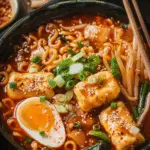
Rabokki | Tteokbokki Ramen
- Total Time: 15 minutes
- Yield: 2 servings
Description
Rabokki (라볶이) is a Korean comfort dish combining chewy rice cakes and ramen noodles in a spicy‑sweet gochujang sauce. It’s hearty, satisfying, and comes together fast.
Ingredients
- 4 cups anchovy or dashi stock (or substitute with light broth)
- 14 rice cakes (tteok), soaked in warm water if frozen or refrigerated
- 1/2 medium onion, thinly sliced
- 3/4 cup cabbage, shredded
- 4 frozen dumplings (optional)
- 1 pack instant ramen noodles (discard seasoning packet)
- 2 boiled eggs, halved (for garnish)
- 1/2 tablespoon toasted sesame seeds
- 2 green onions, thinly sliced
- Sauce: 3 tablespoons gochujang, 3 tablespoons low‑sodium soy sauce, 2 teaspoons sugar, 1 teaspoon gochugaru (or more to taste), 2 teaspoons ramen packet seasoning (optional)
Instructions
- In a bowl, mix together the sauce ingredients (gochujang, soy sauce, sugar, gochugaru, ramen seasoning) and set aside.
- In a large pot over medium-high heat, bring your stock to a boil. Stir in the sauce until well dissolved.
- Add onion, cabbage, rice cakes, and dumplings (if using). Cook for about 7 minutes, stirring occasionally, until the rice cakes become chewy and the dumplings are cooked through.
- Add the ramen noodles and cook until they’re tender (typically 2–3 minutes). The broth should thicken slightly as it reduces.
- Remove from heat. Plate and top with boiled egg halves, sesame seeds, and green onions.
- Serve immediately while hot.
Notes
- If your rice cakes are firm (frozen or refrigerated), soak them in warm water first to soften before cooking.
- Adjust spice by reducing gochugaru or gochujang if you prefer milder heat.
- For added protein, include fish cakes, shrimp, or chicken.
- Some versions add cheese on top for a creamy twist.
- Leftovers thicken — add a splash of broth or water when reheating.
- Prep Time: 5 minutes
- Cook Time: 10 minutes
- Category: Main / Street Food
- Method: Stovetop / One‑Pot
- Cuisine: Korean
Nutrition
- Serving Size: 1 bowl
- Calories: approx 500
- Sugar: 10 g
- Sodium: 850 mg
- Fat: 8 g
- Saturated Fat: 2 g
- Unsaturated Fat: 5 g
- Trans Fat: 0 g
- Carbohydrates: 85 g
- Fiber: 3 g
- Protein: 12 g
- Cholesterol: 60 mg

